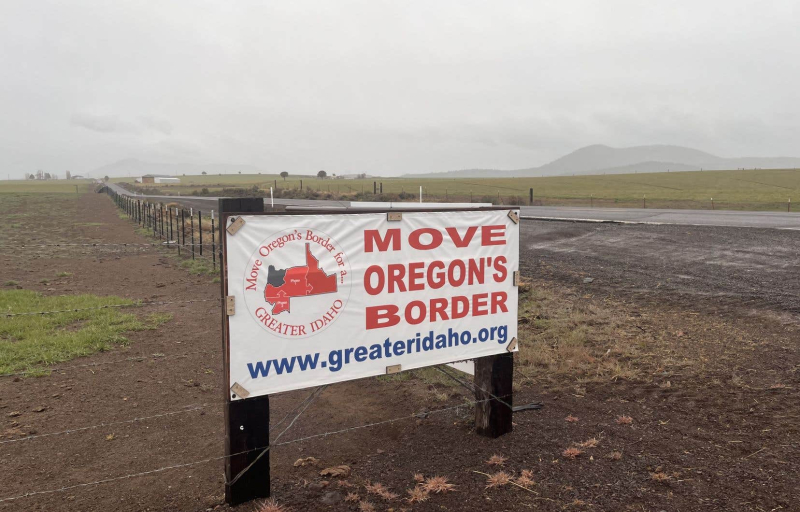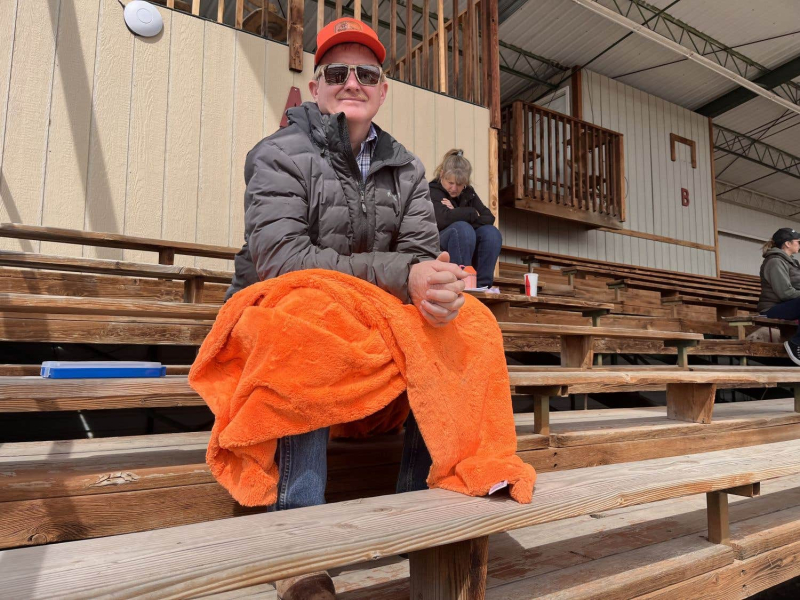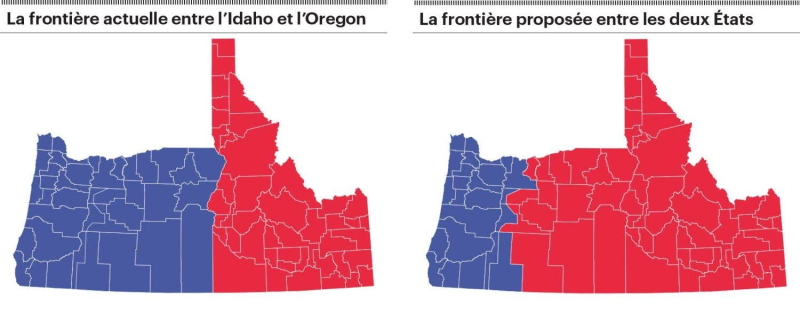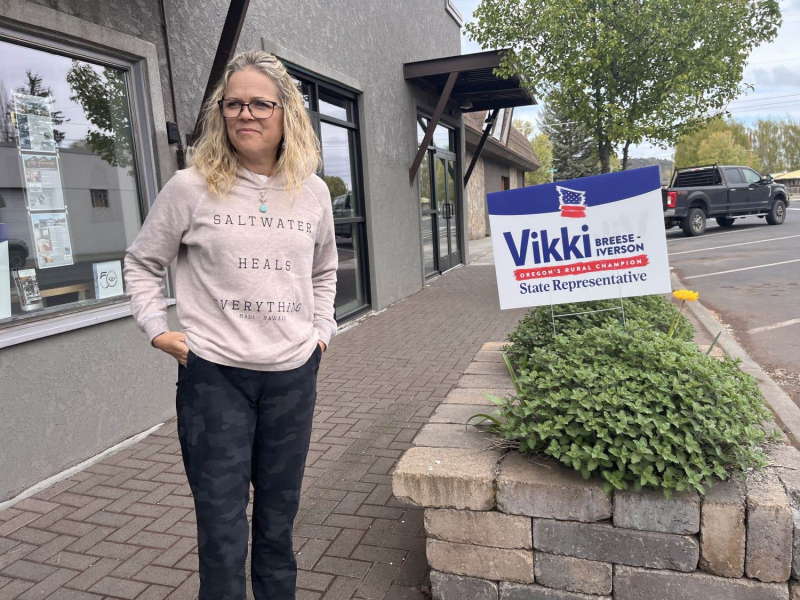
Photo: Fabien Deglise Le Devoir In 17 Oregon counties, signs have sprouted in recent years calling for changing Oregon's borders and bringing 62 percent of its territory under the authority of neighboring Idaho.
Fabien Deglise In Prineville, Oregon
Published at 0:00
- United States
The first election of Donald Trump in 2016 accelerated the trend, his return in 2024 in the electoral race will further fan the flames of resentment and division in the United States. A fragile environment where difficulties in dialogue and fear of compromise, coupled with radical and narrow-minded ideological postures, now threaten one of the foundations of the country: the unity of its States.
Sunday is rodeo day in Prineville, in rural Oregon, and retired trucker Kirk Giovanini certainly wasn't going to miss it.
“My granddaughters are participating in several races today,” the man said proudly, his eyes fixed on the field where young riders were showing off their skills in slaloming a fast-moving horse between a series of terminals. All in front of stands dotted with spectators, in these early, somewhat chilly hours of a May day.
Just three hours' drive southeast of Portland, Prineville lives far from the bohemian spirit of the Pacific coast of the United States, with its ranches, its irrigated plains, its equestrian competitions and its utility vehicles crisscrossing the endless roads of these often desert lands located to the east of the Cascade mountain range. Another world, peaceful, more often watered by the sun than by the rain and where the festive and competitive nature of a Sunday rodeo cannot make us forget the anger which, for years, has been brewing in the region.

Photo: Fabien Deglise Le Devoir From the stands of the Prineville Sunday rodeo, Kirk Giovanini says he no longer recognizes the Oregon in which he has spent his entire life. He is now ready to imagine his life under the governance of the neighboring state of Idaho.
“We live here as outcasts in our own state,” Kirk says when asked how life is in this corner of Oregon. This is no longer tenable. And on May 21, believe me, I will vote yes to our move. »
Moving ? Divorce ? Separation ? Redistricting ? Words vary among the people of Crook County, of which Prineville is the seat, in the face of the question which, next Tuesday, will be put to a referendum by 15,000 local voters to accept or reject the idea of their region leaving Oregon to become part of the neighboring state of Idaho.

Image: Maps and montage Le Devoir In blue, Oregon; Idaho in red
To date, 12 rural counties in the progressive state of the American West have already voted to support this project carried out since 2019 by a movement called “Greater Idaho”. This movement seeks to redraw the boundaries around several areas of eastern Oregon, their territories and their people, to place them under the governance and jurisdiction of the Potato State. Two counties rejected the idea. Approximately 60% of Oregon's surface area is placed on this tipping point, with 9% of the state's population.
Also read
All the texts from our series The Disunited States
Crook will become the 15th county to vote next week, with an outcome that is easy to anticipate, said Republican Rep. Vikki Breese-Iverson, who represents part of this rural region in the Oregon House of Representatives. “The message should be clear,” assures the young politician from her county office, where Le Devoir met her a few days ago. People who live here have the impression of not being represented by Salem [capital of Oregon where elected officials sit] and of being subjected to laws shaped from the west of the state. For them, their political voice no longer counts, and they will certainly express their frustration forcefully in this referendum. »

Photo: Fabien Deglise Le Devoir According to Republican Rep. Vikki Breese-Iverson, who represents part of Crook County in the Oregon House of Representatives, the call to split the region into Idaho should receive overwhelming support this week.
In the small town of Powell Butte, a sign calling to “move Oregon’s borders” awaits visitors at the door of Matt McCaw’s residence. “In fact, on almost all social, economic, political, environmental issues… we are already no longer part of Oregon,” summarizes the spokesperson for the movement, a former mathematics professor in the public network converted into an organizer of marriages in a region where church, family, cattle breeding, hunting and traditions punctuate lives. The northwest part of the state [with its greater Portland metropolitan area] votes 80% Democratic, while here in rural areas we vote 77% Republican. On the size of public administration, the level of taxation, gun control, the legalization of drugs, the management of natural resources, the education of children, electric cars, everything separates us, everything opposes us , continues the man in his forties. However, our demographic weight means that we have no chance of one day being able to adopt policies that follow our deep conservative values. And in these circumstances, moving closer to Idaho, with whom we are frankly more in harmony, becomes the most sensible solution. »
In 2020, Donald Trump won Idaho convincingly, capturing nearly 64% of the vote and imposing his political extremism in 41 of the state's 44 counties.
“We want air to breathe and above all we want to no longer let Portland, Salem and Eugene [the three major cities on the Pacific coast of Oregon] decide our lives here,” summarizes Dennis, retired lawyer met at a gun show in Lakeview, the heart of Lake County where 74% of voters supported the concept of a bigger Idaho two years ago. “This dictatorship of the majority places us in this uncomfortable situation where 10 coyotes and 2 sheep are thinking together about what they are going to have for dinner. And in the end, it's always the same people who get eaten. »
“We need permits for everything here,” says Frank Clawson, a feed producer in Beatty, Klamath County, who in 2022 voted 57 percent in favor of the big move. “To use water, to kill predators around farms, to plant, to harvest, everything becomes complicated. Idaho is not like that. Not at the moment at least. So we're going to leave Portland with its drug legalization gone wrong, its bike paths, its electric terminals, its mixed toilets, and we're going to start our lives elsewhere. »
Also read
This text is published via our Perspectives section.
A complex process
Divorce, visibly accepted by the majority of residents of this rural Oregon, is still far from being finalized, due to the difficulties that accompany the process. The expansion of the territory of Idaho at the expense of Oregon will indeed have to be approved by vote by the legislative bodies of the two neighboring states, and then be submitted to a final vote by Congress in Washington, as stipulated in the section 3 of Article 4 of the Constitution of the United States.
The Republican-dominated Idaho House of Representatives passed a non-binding measure last June calling for formal negotiations with their Oregon counterparts on moving the borders. But the same idea, supported in Salem by a Republican elected official from the rural region of Klamath Falls, is still struggling to make it to the Senate floor, under Democratic control, to be put to a vote.
“It is unlikely that the movement will achieve its objective, since it is a much bigger issue than the simple movement of imaginary lines,” remarked in an interview Norman Williams, professor of law at Willamette University in Salem. “By ceding part of its territory, Oregon will expect Idaho to pay it billions of dollars in compensation for the state's lands and assets there, an expense that Idaho [which is among the 10 least wealthy states in the country] probably can't afford it. »
The changing of the hat in this rural territory will also give Idaho responsibility for 400,000 new citizens, most of them from the poorest regions of Oregon. But also the responsibility for thousands of kilometers of roads and vital infrastructure, which will be added to those that it already has great difficulty maintaining between these current borders, according to the arduous negotiations which surrounded the adoption of the latest budgetary framework for its transport department.
Interesting, but not very viable
“It’s an interesting movement for what it expresses, but it’s also a movement that offers a simplistic solution to a complicated problem,” comments Otto Wallen, a young employee of a small gallery of art in Coeur d'Alene, northern Idaho. “So we have to hope that it never materializes. »
“For now, there is clear support, but resistance to the move could quickly emerge as people in the affected areas become aware of the rights they will also lose,” adds Susan Lowe, a retired teacher who holds an antiques business in the small Oregon village of Burns, in Harney County, where the move to Idaho was accepted by 63% of voters in 2021. “Women and small workers will be the first victims . »
Idaho has the toughest anti-abortion laws in the United States, unlike Oregon, which offers a less repressive legal framework based on true freedom of choice. The minimum wage there is also double that in Idaho. Possible breaking points which, coupled with the fervor of the movement's activists and their demands pitting city against countryside, sometimes fuel sarcasm among some residents of the west of the state.
“This idea of a bigger Idaho is mainly propagated by a handful of individuals to agitate the conservative base in these regions,” says Henry Jokela, a young graphic designer we met in downtown Portland. But he should be reminded, on this basis, that the money in their budget comes mainly from large cities in the west of the state. »
“We are, in reality, facing one of the consequences of partisan polarization in the state, between Republicans and Democrats,” analyzes Norman Williams. The movement has no historical or geographical basis. But it should still be taken seriously by Oregon's elected officials, for what it is and for the reasons that gave it shape. Ignoring it can only contribute to fueling the feeling of alienation and the polarization that it feeds on,” he concludes.
This report was financed with the support of the Transat-Le Devoir.< International Journalism Fund /i>
